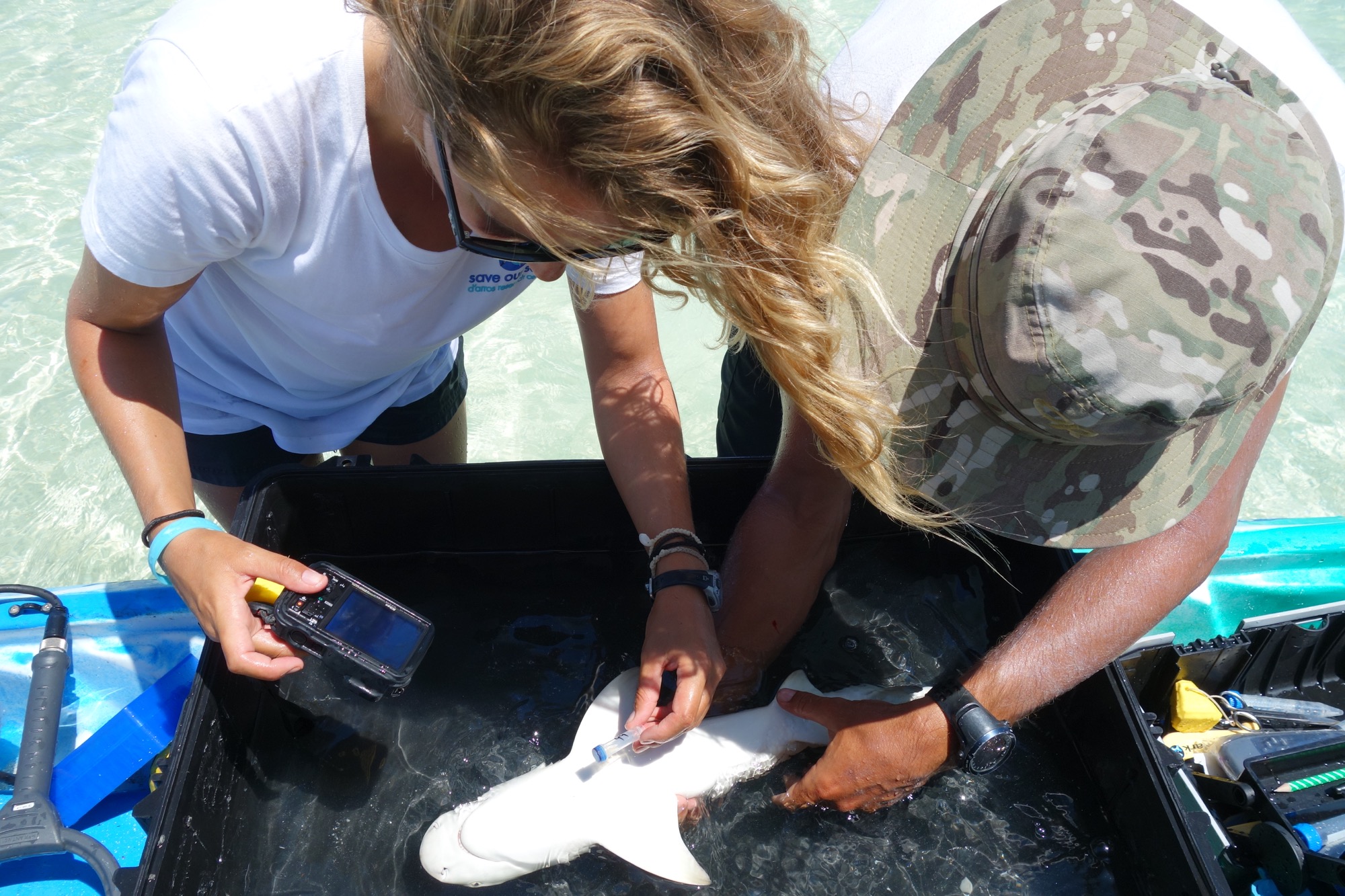Photo Identification
We are able to identify a recaptured shark by the PIT tag that has been inserted into it. These tags are coded with a unique number (see previous blog). However, in case a shark loses its PIT tag or the PIT tag does not work, we rely on another very basic technique: photo identification.
Unfortunately, the photo identification only works for one of my study species: the blacktip reef shark. As their name already indicates, these sharks have black tips on their fins, which then can be used for their identification. Each one of their patterns is unique to the individual and therefore to reconfirm the sharks’ identity we would take pictures from both sides of their first dorsal fin as the right and left side patterns differ from each other.

Different patterns on the first dorsal fin of individual juvenile blacktip reef sharks. Photo by Ornella Weideli | © Save Our Seas Foundation
In addition to the identification pictures of the first dorsal fin, we also take pictures of the umbilical scar of each animal. I will be explaining the significance of umbilical scars in my next field blog.

